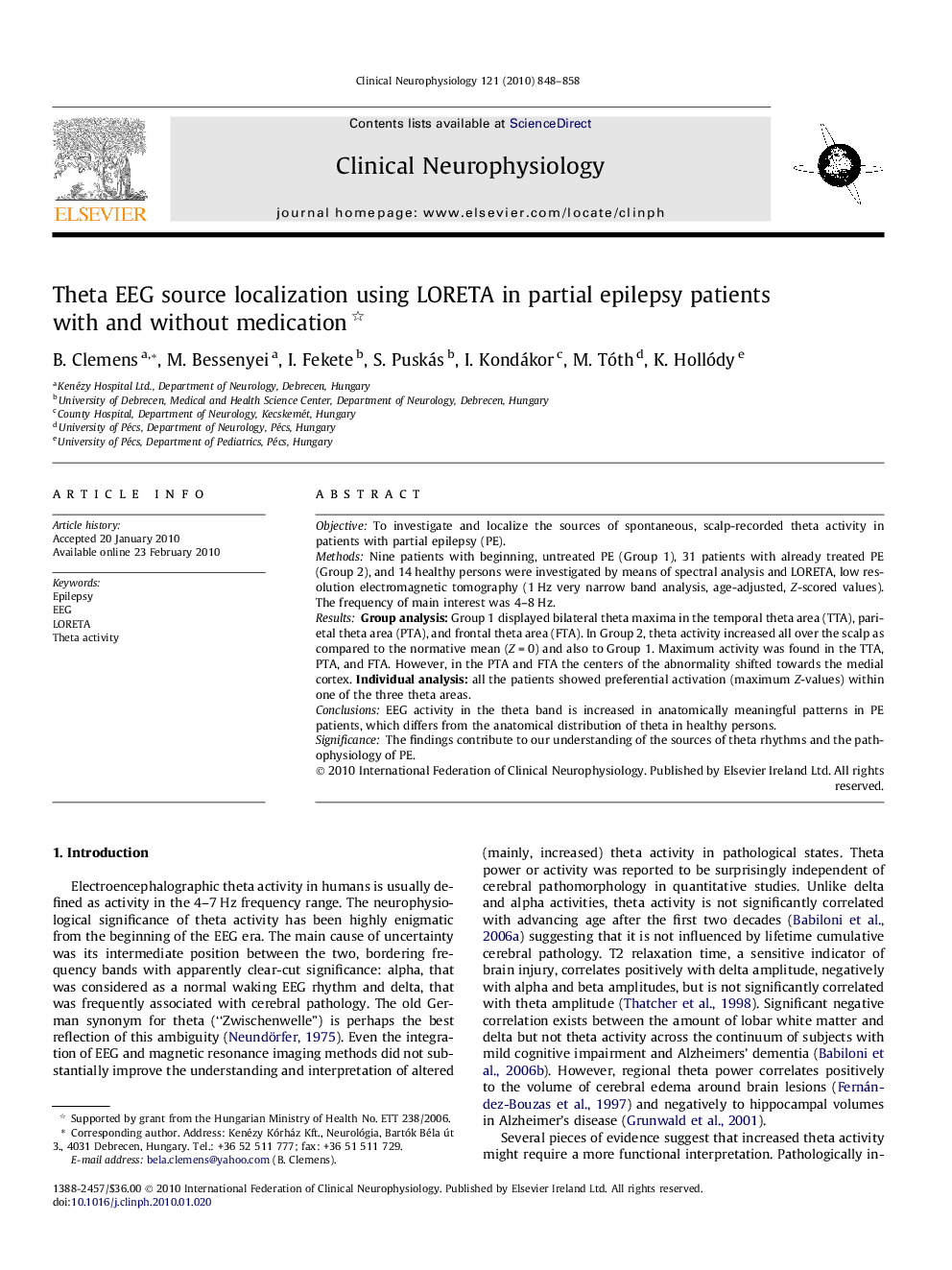| Article ID | Journal | Published Year | Pages | File Type |
|---|---|---|---|---|
| 3045678 | Clinical Neurophysiology | 2010 | 11 Pages |
ObjectiveTo investigate and localize the sources of spontaneous, scalp-recorded theta activity in patients with partial epilepsy (PE).MethodsNine patients with beginning, untreated PE (Group 1), 31 patients with already treated PE (Group 2), and 14 healthy persons were investigated by means of spectral analysis and LORETA, low resolution electromagnetic tomography (1 Hz very narrow band analysis, age-adjusted, Z-scored values). The frequency of main interest was 4–8 Hz.ResultsGroup analysis: Group 1 displayed bilateral theta maxima in the temporal theta area (TTA), parietal theta area (PTA), and frontal theta area (FTA). In Group 2, theta activity increased all over the scalp as compared to the normative mean (Z = 0) and also to Group 1. Maximum activity was found in the TTA, PTA, and FTA. However, in the PTA and FTA the centers of the abnormality shifted towards the medial cortex. Individual analysis: all the patients showed preferential activation (maximum Z-values) within one of the three theta areas.ConclusionsEEG activity in the theta band is increased in anatomically meaningful patterns in PE patients, which differs from the anatomical distribution of theta in healthy persons.SignificanceThe findings contribute to our understanding of the sources of theta rhythms and the pathophysiology of PE.
